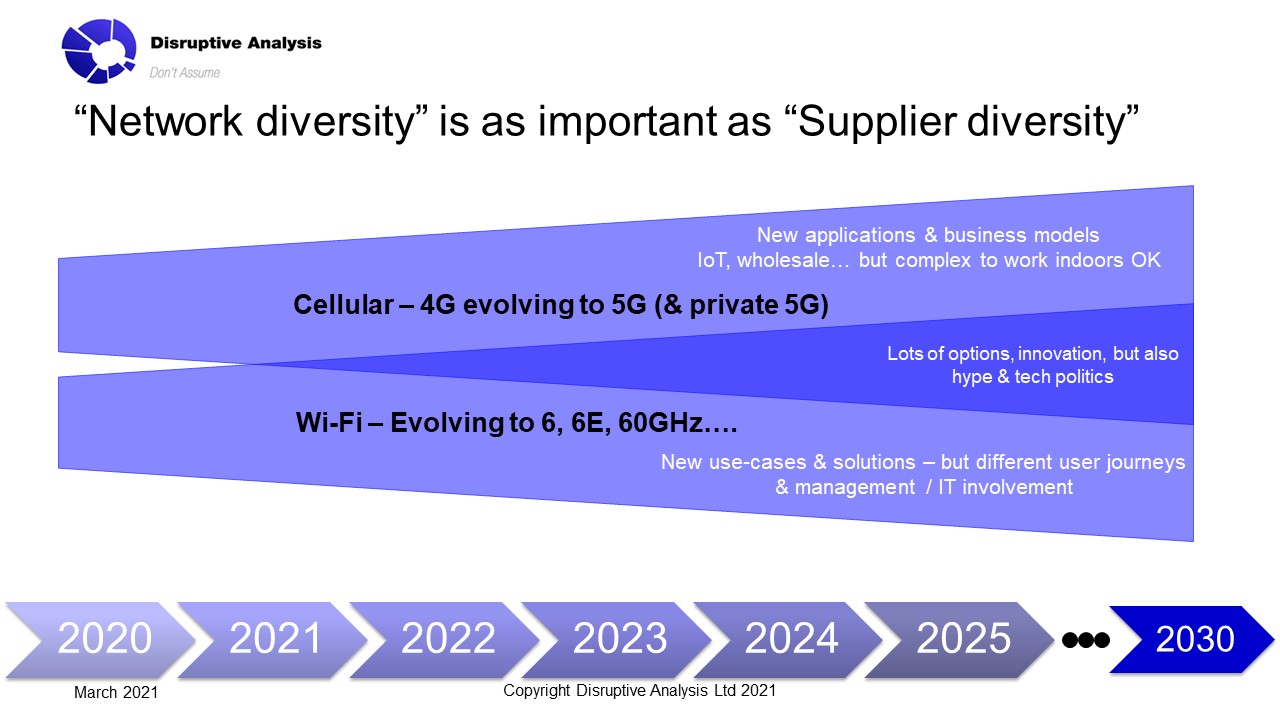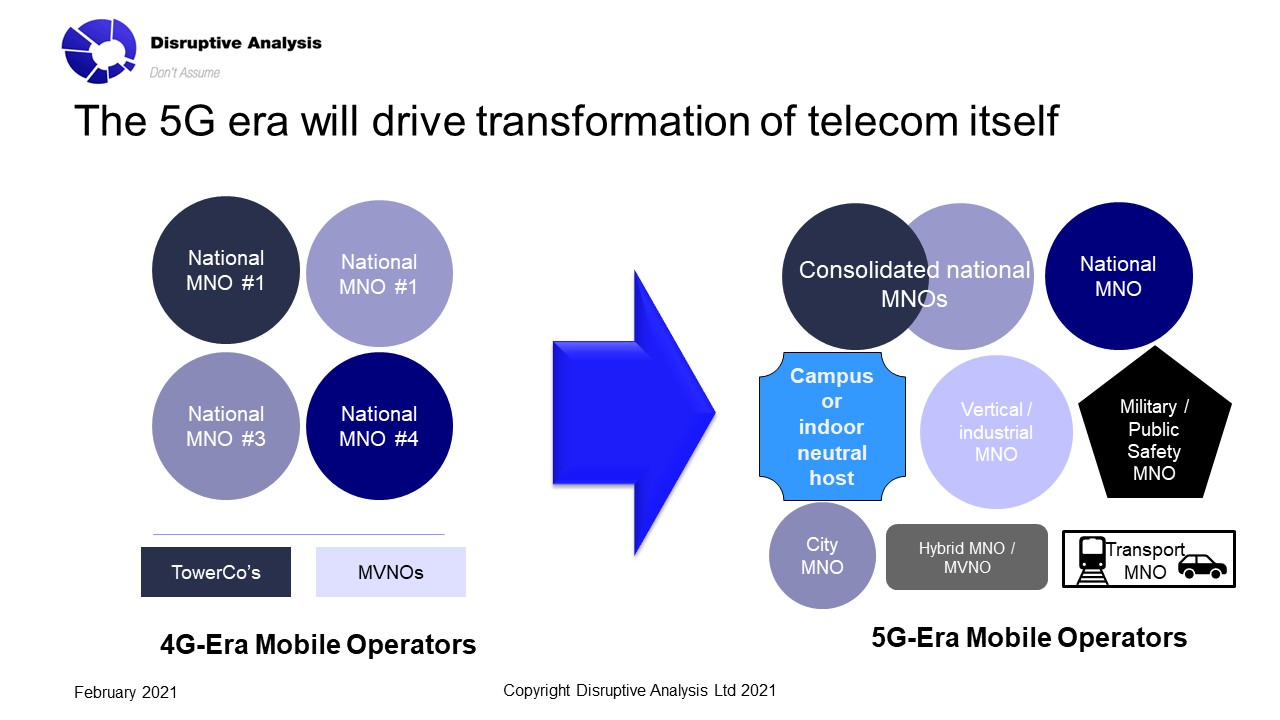Telecom diversification must protect "optionality"
In recent months, Disruptive Analysis has published a number of articles, plus a more detailed report on telecoms supplier diversification, especially related to 5G and the implications for the UK.
Much of the current public policy focus and debate is around removal of “high risk vendors”, or the potential for Open RAN approaches to broaden the range of options for building 5G networks – specifically the main “macro” infrastructure for national MNOs.
This appears to be a narrow and somewhat short-sighted view of diversification.
Instead, there needs to be a much greater emphasis on teasing apart assumptions about 5G and the role of “national 5G macro RAN” in the broader world of advanced communications and applications.
There are too many dubious projections of GDP growth supposedly driven by 5G, with the assumed role of MNOs' networks largely unscrutinised. Even ignoring the inflated billions/trillions forecast, many of 5G’s expected upsides will actually occur in contexts (indoors, private networks etc) where different supplier landscapes already exist.
Furthermore, additional diversity is afforded by substitute technologies such as Wi-Fi6/6E in local areas, or satellite over wider and outdoor zones. 5G is emphatically not a "special flower" for connectivity – it's Just Another G.

Demand diversity should be an explicit goal
To reflect this, there should be a greater focus on creating demand diversity, which will then pull through supply diversity in its wake – different types of network require different types of (and suppliers of) equipment and software.
In the medium term, the mobile and broader wireless / telecom industry will change “shape” significantly. We will move from a world of 2-4 near-identical MNOs per country to a more diverse and differentiated landscape, with specialist providers at geographic, industrial and wholesale/retail levels. Private networks, neutral hosts, city-level networks, community operators and hybrid MVNO/MNO providers will coexist.
While some of this evolution is inevitable and “locked in”, governments could strengthen the diversity of business models, broaden the base of network ownership, and improve offers to consumers and enterprises.
National MNOs with a heavy focus on consumer out-of-home mobility will remain extremely important – and also expand to a wider enterprise customer base – but will be supplemented by a great variety of other network owners and service providers.

Policy implications
Policy needs to be driven bottom-up from detail, and top-down from holistic long-term goals – not from middle-out by specific 2021 views of technology architecture which may turn out to be ephemeral.
Governments should consider a long-term roadmap for a better telecoms/networking landscape towards 2030, with 6G and other technologies enabling "network biodiversity" rather than risky monoculture.
There should be no mandates for specific architectural configurations – a focus on outcomes is better than a focus on inputs. Specifications and delivery models evolve over time, with adaptations and competing alternatives emerging alongside them. For instance, we are already seeing the original "mix and match" vision for Open RAN being supplanted by a smaller number of market-ready "reference designs" made up of pre-integrated components.
Encouragement for this middle tier of systems integrators – perhaps with security or other accreditations – could make sense. Governments should also aim to collect hard data on the costs, security, flexibility and genuine “openness”, to better inform future policy pivots beyond qualitative or cherry-picked assertions. If Open RAN implementations really are that performant, secure and cost-reducing, then they will win in the marketplace without overt government assistance.
Technology trends are like pendulums. By the time we get to 6G, that may swing either towards or against openness and vendor diversity. It is unclear for instance which approaches can drive down energy / CO2 use most rapidly. We may face complex – and perhaps uncomfortable – trade-offs about "openness" that we are not in a position to judge today.
In short when we talk about telecoms diversification, we should aim to protect "optionality" in all dimensions:
- Demand diversification as well as supply
- Technology neutrality – and perhaps incentivised multi-technology diversity
- Open, proprietary, pre-integrated and hybrid architectures
- Domestic and multi-national supply options wherever possible

Guest blog by Dean Bubley from Disruptive Analysis — Follow on Twitter and LinkedIn. You can also read more of Dean's insight on this topic in the Event Round-Up of January's Diversifying Telecoms event on private networks.
To read more from #DiversifyingTelecoms Campaign Week check out our landing page here.

